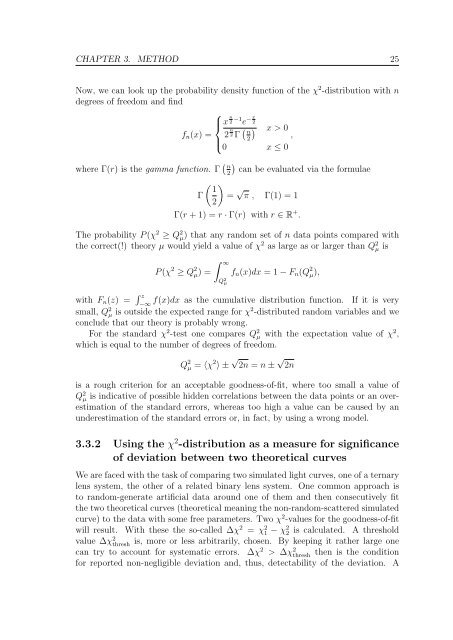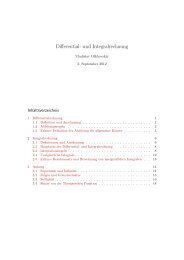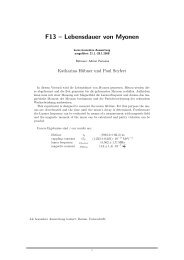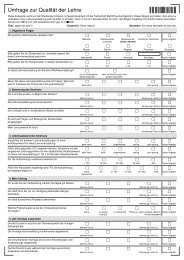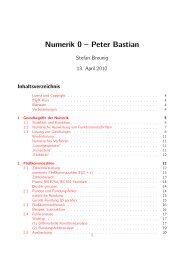Extrasolar Moons as Gravitational Microlenses Christine Liebig
Extrasolar Moons as Gravitational Microlenses Christine Liebig
Extrasolar Moons as Gravitational Microlenses Christine Liebig
You also want an ePaper? Increase the reach of your titles
YUMPU automatically turns print PDFs into web optimized ePapers that Google loves.
CHAPTER 3. METHOD 25<br />
Now, we can look up the probability density function of the χ2-distribution with n<br />
degrees of freedom and find<br />
⎧<br />
⎪⎨ x<br />
fn(x) =<br />
⎪⎩<br />
n<br />
2 −1 x<br />
− e 2<br />
2 n<br />
2 Γ x > 0<br />
n<br />
,<br />
2<br />
0 x ≤ 0<br />
where Γ(r) is the gamma function. Γ <br />
n can be evaluated via the formulae<br />
2<br />
<br />
1<br />
Γ =<br />
2<br />
√ π , Γ(1) = 1<br />
Γ(r + 1) = r · Γ(r) with r ∈ R + .<br />
The probability P (χ 2 ≥ Q 2 µ) that any random set of n data points compared with<br />
the correct(!) theory µ would yield a value of χ 2 <strong>as</strong> large <strong>as</strong> or larger than Q 2 µ is<br />
P (χ 2 ≥ Q 2 µ) =<br />
∞<br />
Q 2 µ<br />
fn(x)dx = 1 − Fn(Q 2 µ),<br />
with Fn(z) = z<br />
f(x)dx <strong>as</strong> the cumulative distribution function. If it is very<br />
−∞<br />
small, Q2 µ is outside the expected range for χ2-distributed random variables and we<br />
conclude that our theory is probably wrong.<br />
For the standard χ2-test one compares Q2 µ with the expectation value of χ2 ,<br />
which is equal to the number of degrees of freedom.<br />
Q 2 µ = 〈χ 2 〉 ± √ 2n = n ± √ 2n<br />
is a rough criterion for an acceptable goodness-of-fit, where too small a value of<br />
Q 2 µ is indicative of possible hidden correlations between the data points or an overestimation<br />
of the standard errors, where<strong>as</strong> too high a value can be caused by an<br />
underestimation of the standard errors or, in fact, by using a wrong model.<br />
3.3.2 Using the χ 2 -distribution <strong>as</strong> a me<strong>as</strong>ure for significance<br />
of deviation between two theoretical curves<br />
We are faced with the t<strong>as</strong>k of comparing two simulated light curves, one of a ternary<br />
lens system, the other of a related binary lens system. One common approach is<br />
to random-generate artificial data around one of them and then consecutively fit<br />
the two theoretical curves (theoretical meaning the non-random-scattered simulated<br />
curve) to the data with some free parameters. Two χ2-values for the goodness-of-fit<br />
will result. With these the so-called ∆χ2 = χ2 1 − χ2 2 is calculated. A threshold<br />
value ∆χ2 thresh is, more or less arbitrarily, chosen. By keeping it rather large one<br />
can try to account for systematic errors. ∆χ2 > ∆χ2 thresh then is the condition<br />
for reported non-negligible deviation and, thus, detectability of the deviation. A


